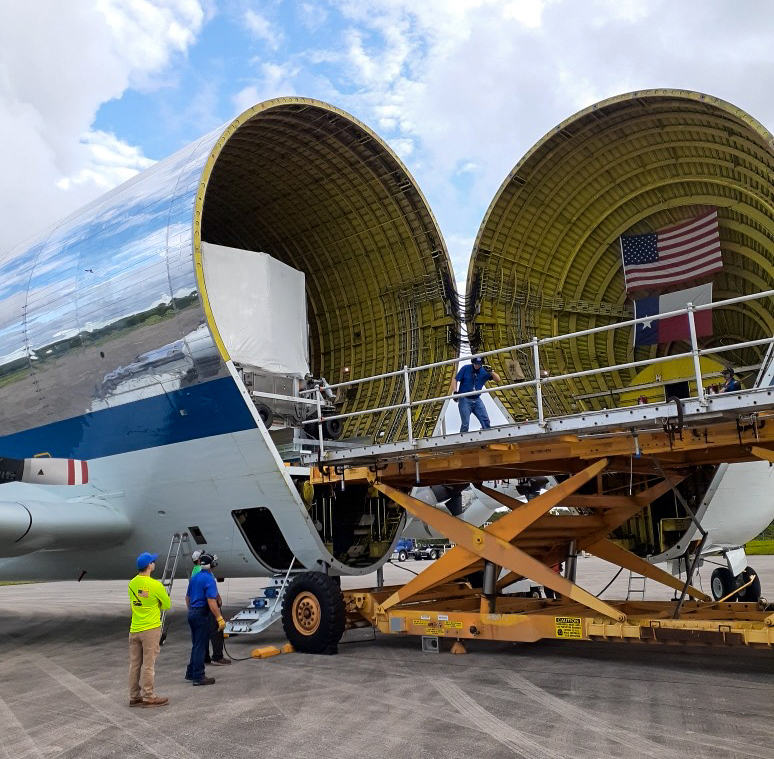
The Orion Service Module Structural Test Article (SM-STA), composed of the European Service Module (ESM) and Crew Module Adapter (CMA), arrived at NASA’s Kennedy Space Center in Florida following the completion of the test campaign to certify the Orion Service Module for Artemis I. Transported via Super Guppy from Lockheed Martin’s test facility in Denver, Colorado, on Sept. 11, components will now be used in testing for future Artemis missions.
“The Orion SM-STA supported testing in multiple configurations to validate the structural robustness of the vehicle under a variety of conditions that a spacecraft will experience on lunar missions for the Artemis program,” said Rafael Garcia, Orion Test and Verification lead.
At Kennedy, the Orion SM-STA test article will be separated from the CMA test article, and portions of the CMA test article will support qualifications tests in preparation for the Artemis II mission. The test version of the ESM will remain at Kennedy, in order to support future structural qualification tests such as testing what volume of sound and how much shaking the vehicle can handle for future Artemis missions.
When tested together, the full test stack of Orion verified the spacecraft’s structural durability for all flight phases of the Artemis I flight, which is designed to be an opportunity to test the kind of maneuvers and environments the spacecraft will see on future exploration missions. The test structures experienced launch and entry loads tests, intense acoustic vibration force, and shock tests that recreate the powerful blasts needed for critical separation events during flight. A lightning test was performed to evaluate potential flight hardware damage if the vehicle were to be hit by lightning prior to launch.
The Artemis II flight will test a hybrid free return trajectory, which uses the Moon’s gravitational pull as a slingshot to put Orion on the return path home instead of using propulsion. With astronauts aboard the spacecraft, additional validation is required of all vehicle components to certify the capsule prior to proving lunar sustainability with Artemis III and beyond.
The first in a series of increasingly complex missions, Artemis I will test the Orion spacecraft and Space Launch System as an integrated system ahead of crewed flights to the Moon. Under the Artemis program, NASA will land the first woman and the next man on the Moon in 2024.
